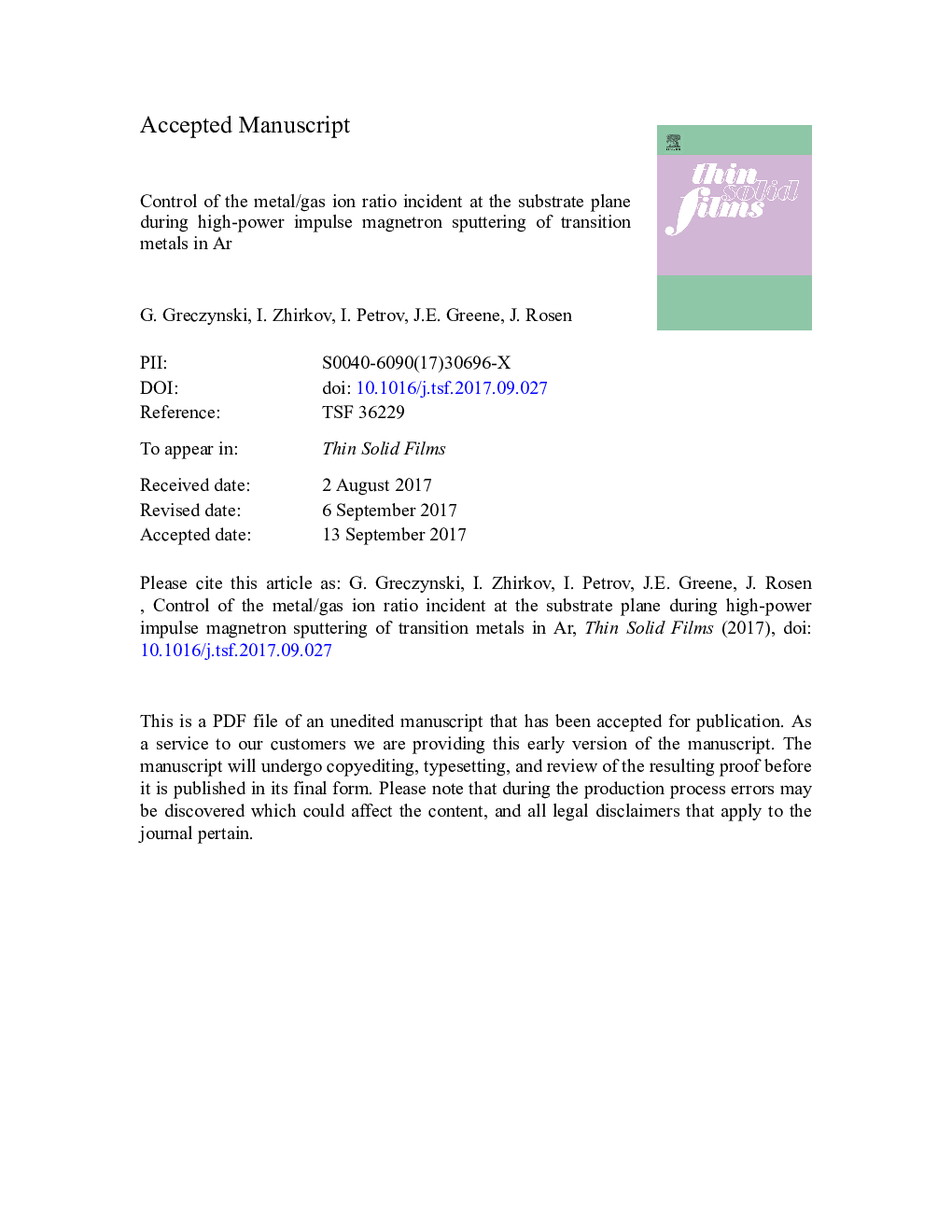| کد مقاله | کد نشریه | سال انتشار | مقاله انگلیسی | نسخه تمام متن |
|---|---|---|---|---|
| 5465712 | 1517970 | 2017 | 29 صفحه PDF | دانلود رایگان |
عنوان انگلیسی مقاله ISI
Control of the metal/gas ion ratio incident at the substrate plane during high-power impulse magnetron sputtering of transition metals in Ar
دانلود مقاله + سفارش ترجمه
دانلود مقاله ISI انگلیسی
رایگان برای ایرانیان
کلمات کلیدی
موضوعات مرتبط
مهندسی و علوم پایه
مهندسی مواد
فناوری نانو (نانو تکنولوژی)
پیش نمایش صفحه اول مقاله

چکیده انگلیسی
High-power impulse magnetron sputtering (HiPIMS) of materials systems with metal/gas-atom mass ratios mMe/mg near, or less than, unity presents a challenge for precise timing of synchronous substrate-bias pulses to select metal-ion irradiation of the film and, thus, reduce stress while increasing layer density during low-temperature growth. The problem stems from high gas-ion fluxes Fg+(t) at the substrate, which overlap with metal-ion fluxes FMe+(t). We use energy- and time-dependent mass spectrometry to analyze FMe+(t) and Fg+(t) for Group IVb transition-metal targets in Ar and show that the time-and energy-integrated metal/gas ion ratio NMe+/NAr+ at the substrate can be controlled over a wide range by adjusting the HiPIMS pulse length ÏON, while maintaining the peak target current density JT,peak constant. The effect is a consequence of severe gas rarefaction which scales with JT(t). For Ti-HiPIMS, terminating the discharge at the maximum JT(t), corresponding to ÏON = 30 μs, there is an essentially complete loss of Ar+ ion intensity, yielding NTi+/NAr+ ~ 60. With increasing ÏON, JT(t) decreases and NTi+/NAr+ gradually decays, due to Ar refill, to ~ 1 with ÏON = 120 μs. Time-resolved ion-energy distribution functions confirm that the degree of rarefaction depends on ÏON: for shorter pulses, ÏON < 60 μs, the original sputtered-atom Sigmund-Thompson energy distributions are preserved long after the HiPIMS pulse, which is in distinct contrast to longer pulses, ÏON â¥Â 60 μs, for which the energy distributions collapse into narrow thermalized peaks. Thus, optimizing the HiPIMS pulse width minimizes the gas-ion flux to the substrate independent of mMe/mg.
ناشر
Database: Elsevier - ScienceDirect (ساینس دایرکت)
Journal: Thin Solid Films - Volume 642, 30 November 2017, Pages 36-40
Journal: Thin Solid Films - Volume 642, 30 November 2017, Pages 36-40
نویسندگان
G. Greczynski, I. Zhirkov, I. Petrov, J.E. Greene, J. Rosen,